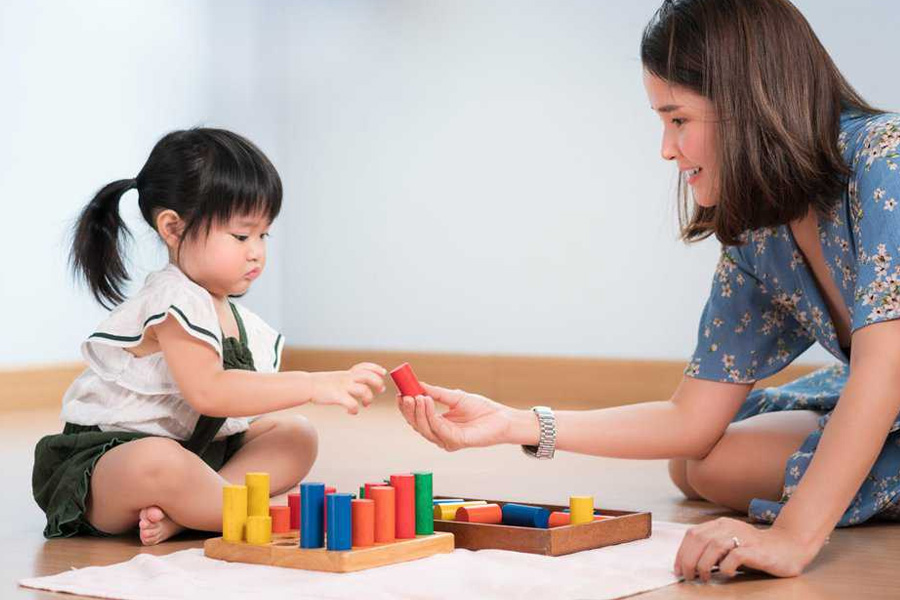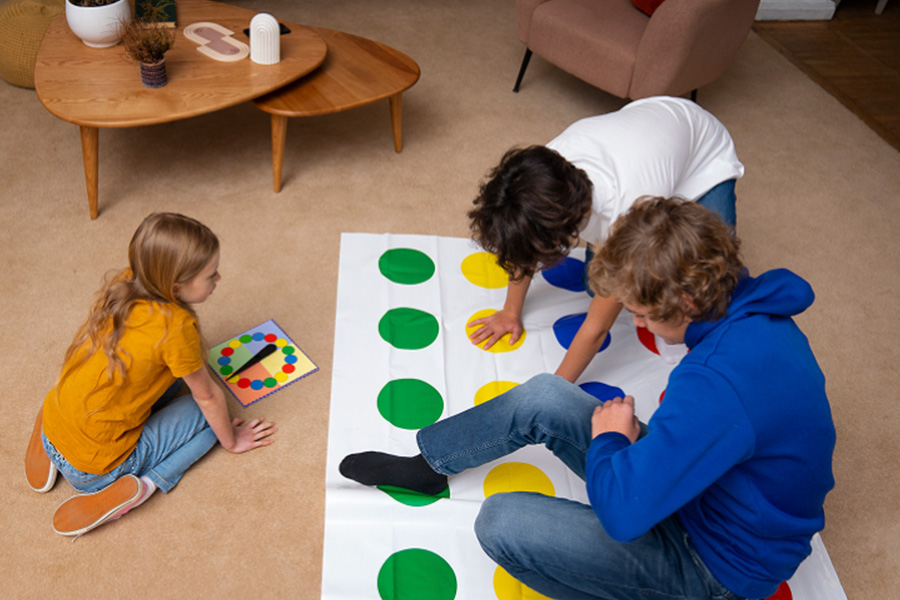Observing a young person’s journey through their early years is a remarkable experience. This process involves significant physical, cognitive, and social changes. While general patterns exist, each individual progresses at their own unique pace.
Genetics provide a foundation, but they do not solely determine a person’s path. Families often notice distinct personalities and strengths emerging. A supportive home environment plays a vital role in nurturing this growth.
The first five years of life are especially critical. During this time, the brain develops faster than at any other point. This period lays the groundwork for future learning and wellbeing.
Understanding these milestones helps parents and caregivers make informed decisions. This guide offers evidence-based insights to support families. It focuses on recognising healthy progress and knowing when additional guidance may be beneficial.
Key Takeaways
- Early years growth is a complex process involving physical, cognitive, and social changes.
- Every young person develops at their own unique pace with individual strengths.
- Parents and the home environment they create have a significant influence.
- The first five years represent a pivotal time for brain development.
- Recognising general milestones helps families support healthy progress effectively.
- Individual variation is normal, and comparisons to rigid timelines are unhelpful.
Foundations of Child Development Milestones
Scientific research reveals that the most critical period for brain formation occurs during the initial five years of life. This timeframe represents an unparalleled window where 90% of cerebral architecture establishes itself. The pace of neurological growth during these early years exceeds any other stage.
Early Years and Rapid Brain Growth
From pregnancy through infancy, billions of neural connections form through everyday interactions. Simple activities like smiling, talking, and playing directly stimulate this remarkable growth. Each stage offers specific windows of opportunity for different skills to develop.
Babies experience unprecedented neurological expansion during their first years. Responsive caregiving creates optimal conditions for healthy progress across all domains. These formative experiences build communication abilities and social confidence.
Influential Factors in Home and Caregiver Environments
The physical and emotional environments parents create profoundly impact developmental outcomes. Consistent, warm caregivers who provide security have the most positive influence. Home settings can even affect how genetic traits express themselves.
Meeting physical and dietary needs is essential for proper growth. Research indicates that neglect can disrupt progress more significantly than other factors. Safe spaces and proper nutrition contribute substantially to learning capabilities.
| Developmental Stage | Key Brain Milestones | Optimal Environmental Factors | Critical Time Windows |
|---|---|---|---|
| Pregnancy | Neural tube formation | Maternal nutrition, reduced stress | First trimester |
| Infancy (0-12 months) | Rapid synapse formation | Responsive care, sensory stimulation | First 6 months |
| Toddler (1-3 years) | Language acquisition peaks | Interactive play, consistent routines | 18-36 months |
| Preschool (3-5 years) | Executive function development | Social interaction, guided learning | 3-5 years |
While development follows predictable patterns, the quality of home environments significantly influences each individual’s progress. Caregiver interactions during formative years shape the pace and quality of growth. Understanding these foundations helps support healthy trajectories effectively.
Child Development: Understanding Growth and Progress
While most children follow predictable growth patterns, abuse and neglect can disrupt this natural progression. Understanding these challenges helps caregivers recognise when intervention may be necessary.
Impact of Abuse, Neglect and Trauma on Growth
Adverse childhood experiences pose serious risks to healthy development across multiple domains. Research indicates neglect may have more profound impacts than abuse in certain ways.
Trauma particularly affects language skills. Young people experiencing abuse often have fewer opportunities for verbal interactions essential for communication.
These experiences compromise children’s ability to form healthy relationships and build self-esteem. The effects can persist into adolescence and beyond.
However, these challenges do not inevitably determine a child’s future. Many demonstrate remarkable resilience despite difficult circumstances.
Role of Educational and Social Experiences
Positive interactions outside the home can support development and mitigate risks. Educational settings provide opportunities for language skills and emotional regulation.
Schools and social programmes can identify children whose needs aren’t being met. They offer interventions supporting healthy growth despite challenges.
Understanding children’s words and behaviours helps professionals recognise developmental concerns. Appropriate educational experiences serve as protective factors.
These supportive environments help build resilience promoting long-term wellbeing after early trauma.
Expert Guidance and Proven Strategies
Practical strategies from specialists offer families clear pathways to support their young ones’ progress. Many programmes provide structured approaches that integrate seamlessly into daily routines.
Implementing Recommendations from Chattertots Speech Therapy
Speech and language professionals offer evidence-based guidance for different ages. Their techniques help build vocabulary and encourage communication naturally.
Families can incorporate these methods during everyday activities like mealtimes or play. This approach makes skill development enjoyable rather than stressful.
Professional guidance helps parents recognise typical milestones. They learn when additional support might benefit their child’s language learning.
Additional Resources including insights from Chattertots
Several organisations provide comprehensive support for families. The Starting Reception website lists essential skills children need for school success.
It offers fun ways to practise sharing and using cutlery together. The resource includes specific guidance for children with Special Educational Needs.
The Best Start in Life parent hub brings together information for every stage. It covers government childcare schemes and wraparound care options.
| Resource Type | Key Focus Areas | Target Audience | Access Method |
|---|---|---|---|
| Speech Therapy Guidance | Language building, communication skills | Parents of young children | Professional consultations |
| Starting Reception Website | School readiness, social skills | Families with preschool children | Online platform |
| Best Start in Life Hub | Childcare support, developmental guidance | Parents and caregivers | Digital resource centre |
| Training Programmes | Trauma awareness, brain development | Parents and professionals | Workshops and courses |
These resources provide crucial information that supports healthy growth across all developmental domains. Consistent application over time yields the best results for children’s learning journeys.
Conclusion
Contemporary studies continue to illuminate the intricate dance between nature and nurture in shaping a young person’s future. Science confirms that experiences from pregnancy through the early years build the brain’s architecture profoundly. These formative stages establish foundations for learning, behaviour, and health across the lifespan.
While genetics provide a blueprint, the environments families create have tremendous influence. Responsive relationships and supportive home settings help children thrive despite various risks. Understanding typical milestones helps parents recognise their little one’s unique needs at each age.
Research shows that all domains of growth are interconnected, each supporting the others. When concerns arise, seeking guidance early can make a significant difference. Supporting healthy progress is less about perfection than about consistent, attentive care.
Every individual deserves the opportunity to reach their potential. The journey of growth continues throughout life, with the early years representing a particularly crucial stage for building strong foundations.
FAQ
What are the most critical years for a young person’s brain growth?
The early years, from pregnancy to around age five, are a period of rapid brain growth. During this time, the brain’s architecture is built, forming the foundation for all future learning, behaviour, and health. Positive experiences and nurturing relationships during this stage are crucial for healthy development.
How can parents and caregivers support healthy progress at home?
Supportive home environments are key. This includes providing consistent, responsive care, engaging in conversation and play, and ensuring safety. Simple activities like reading together, talking about daily events, and offering guided play can significantly boost a child’s language and social skills.
What impact do adverse experiences, such as abuse or neglect, have on growth?
Abuse and neglect pose serious risks to a young person’s development. Such trauma can disrupt brain architecture and lead to long-term difficulties with learning, emotional regulation, and forming healthy relationships. Early intervention and supportive care are essential to help mitigate these effects.
Why are educational and social experiences so important in the early years?
These experiences directly shape the brain’s wiring. High-quality early education and positive social interactions help children develop critical cognitive and emotional skills. They learn to communicate, solve problems, and manage feelings, which are vital for success in school and life.
What strategies does Chattertots Speech Therapy recommend for language development?
Chattertots Speech Therapy emphasises the power of daily, interactive communication. Their guidance often includes using rich vocabulary, following a child’s lead in play to build conversation, and turning everyday routines into learning opportunities. They also stress the importance of seeking professional advice if there are concerns about a child’s speech or language.



